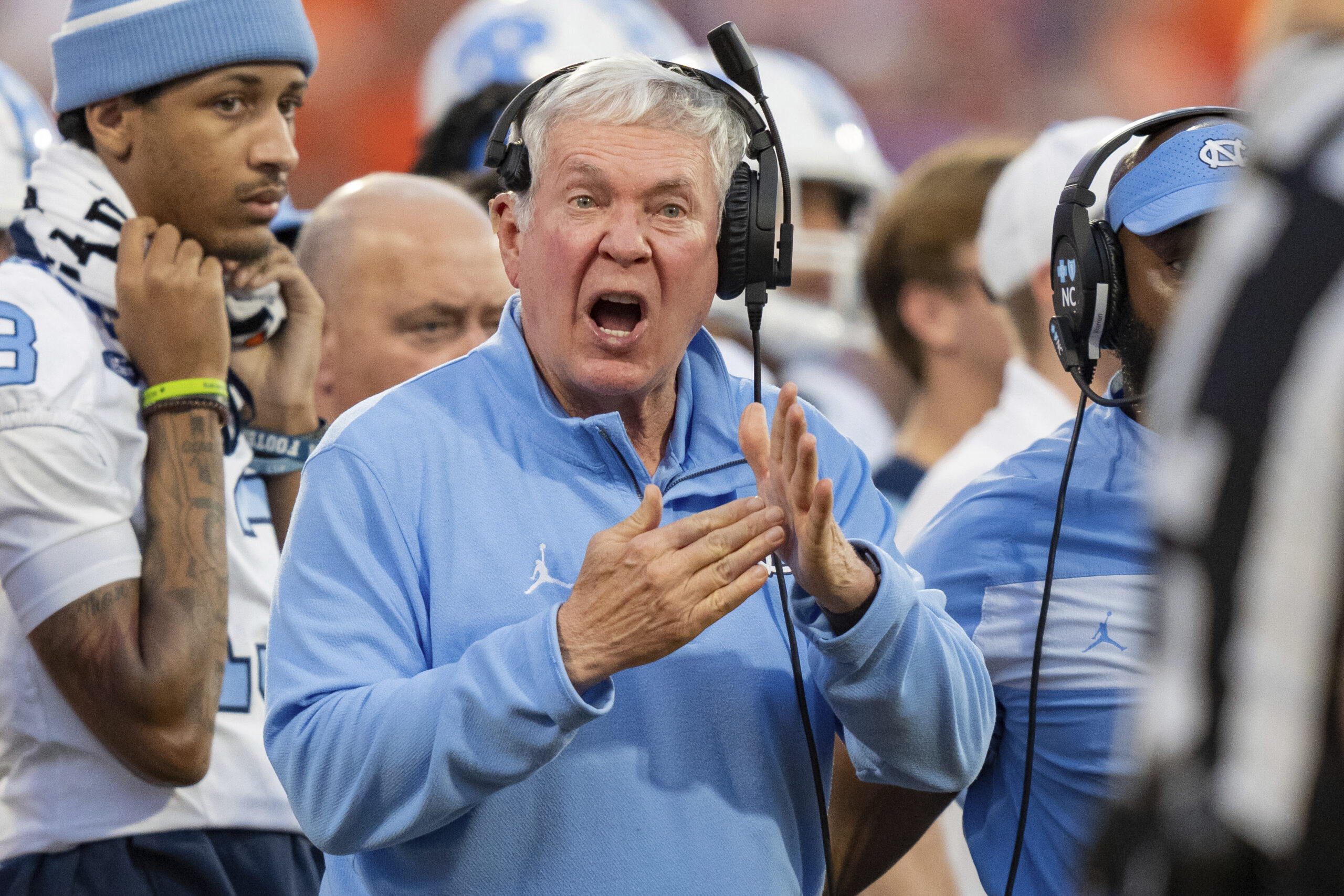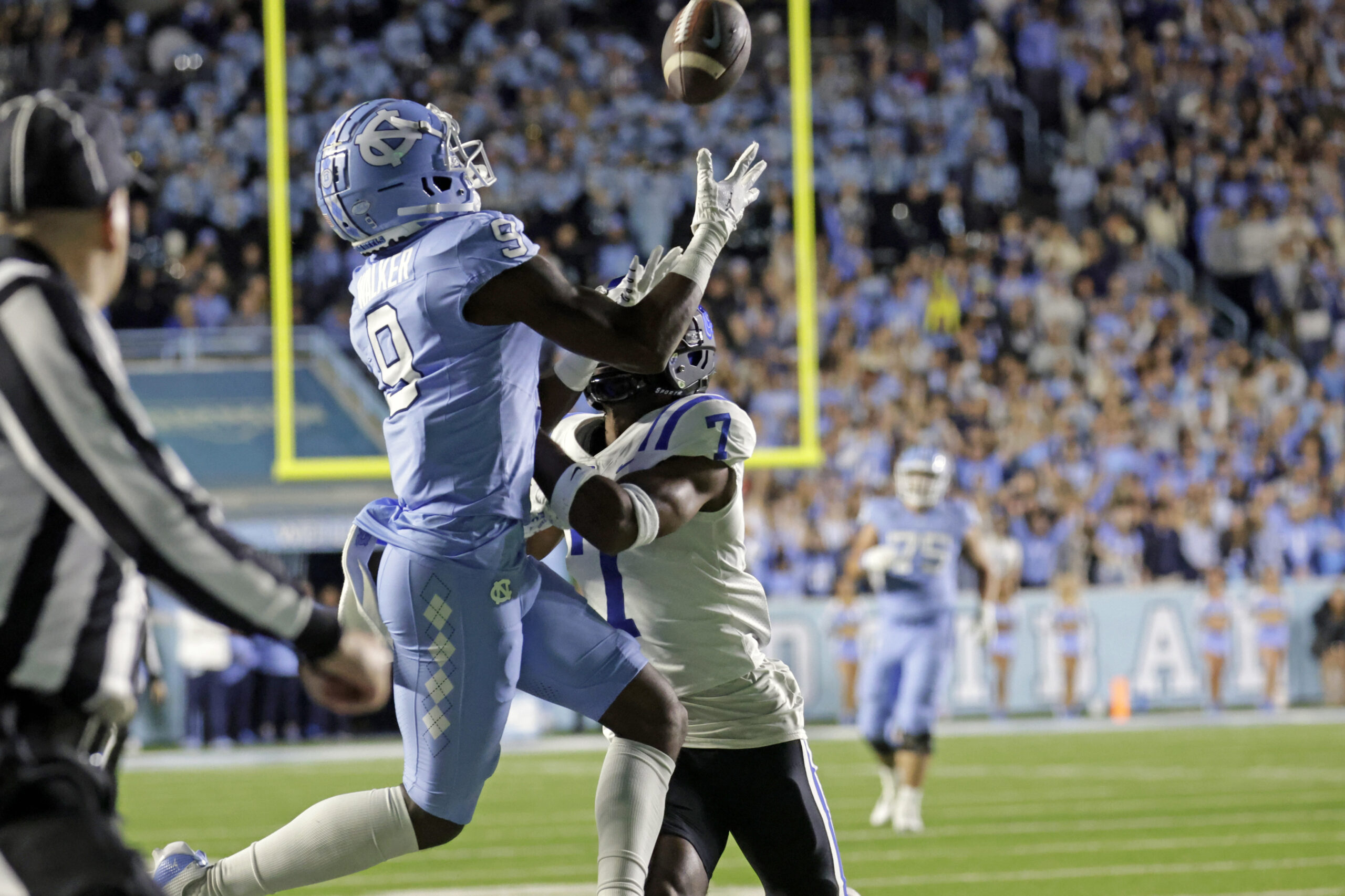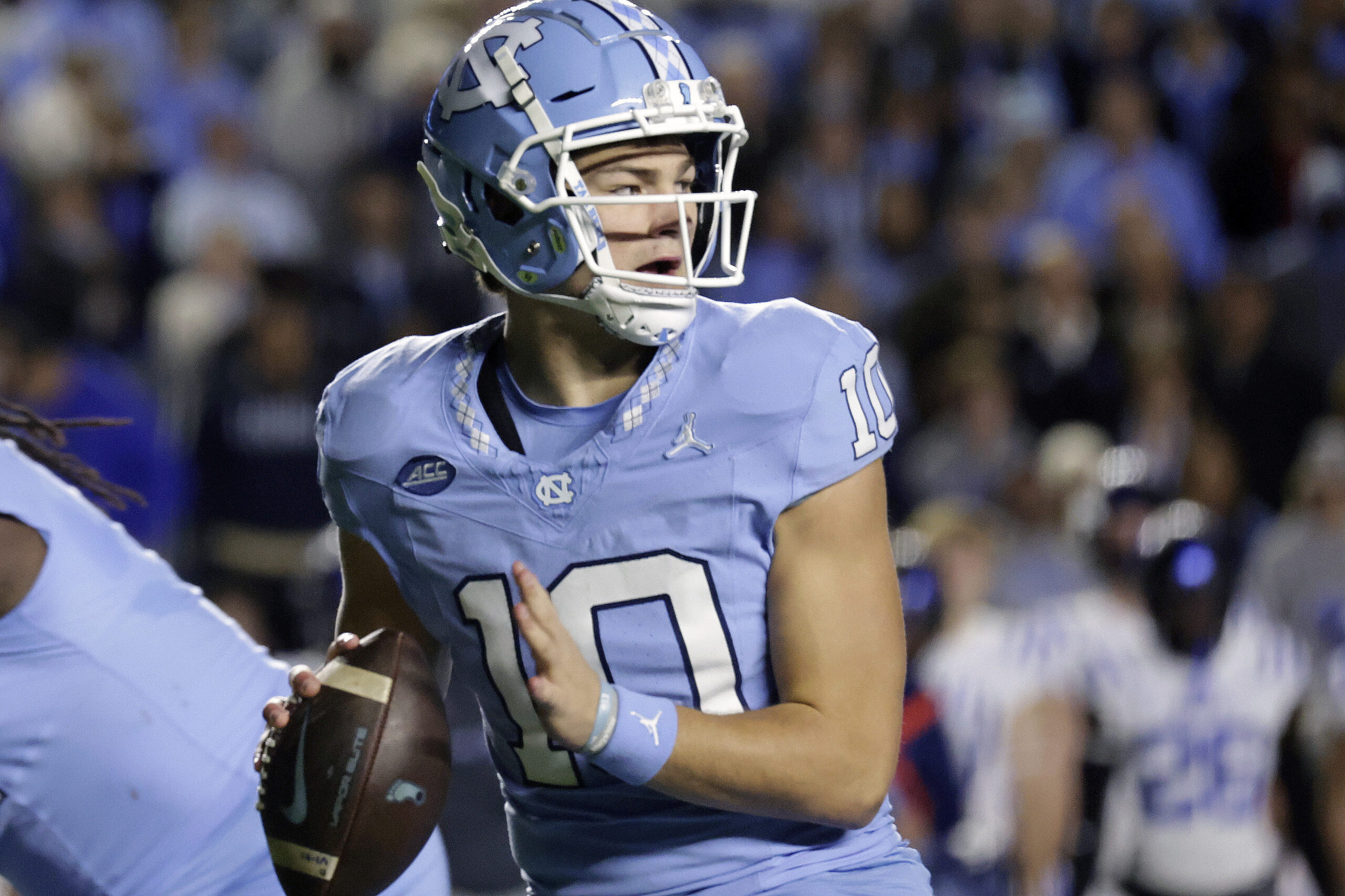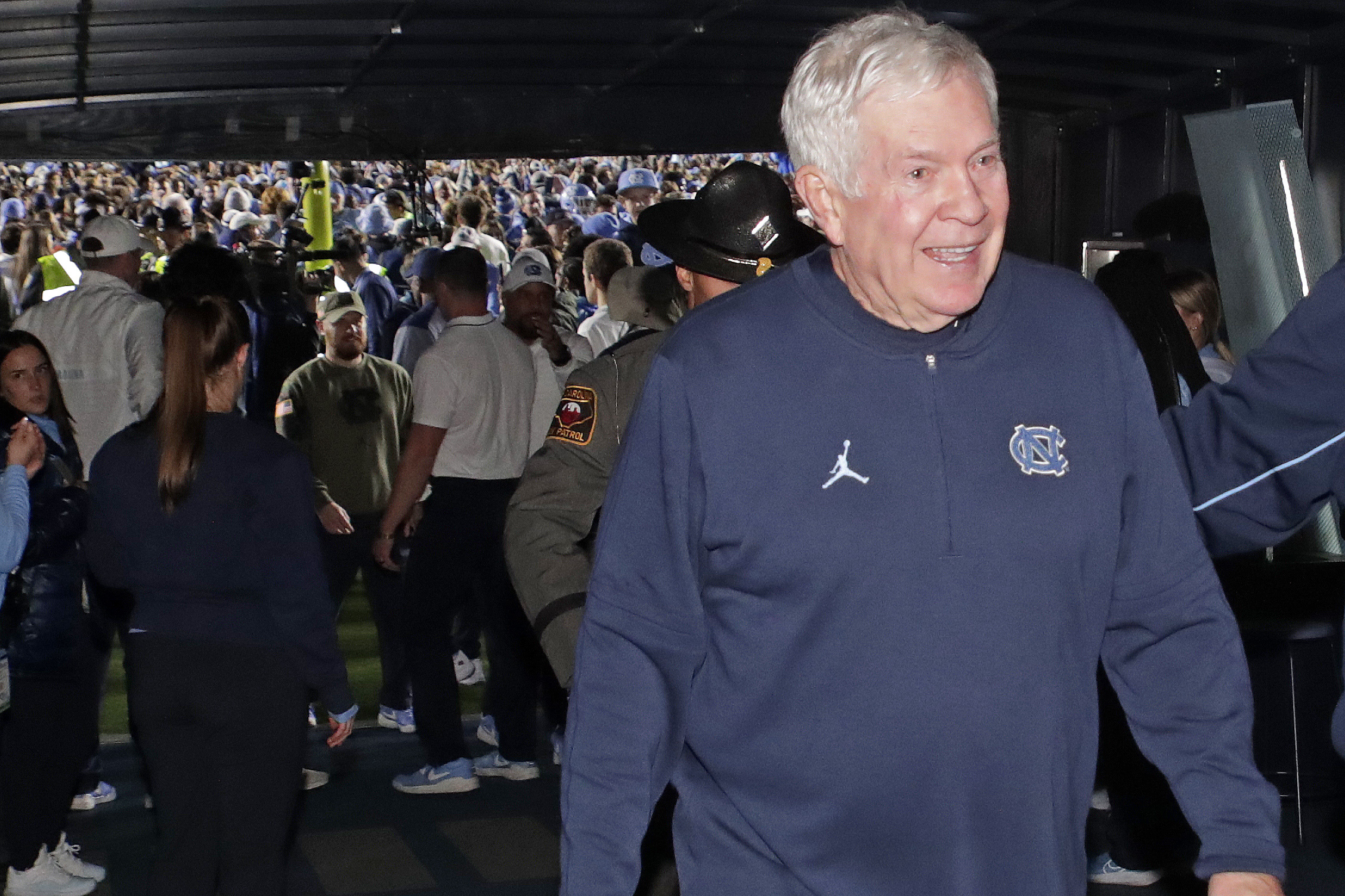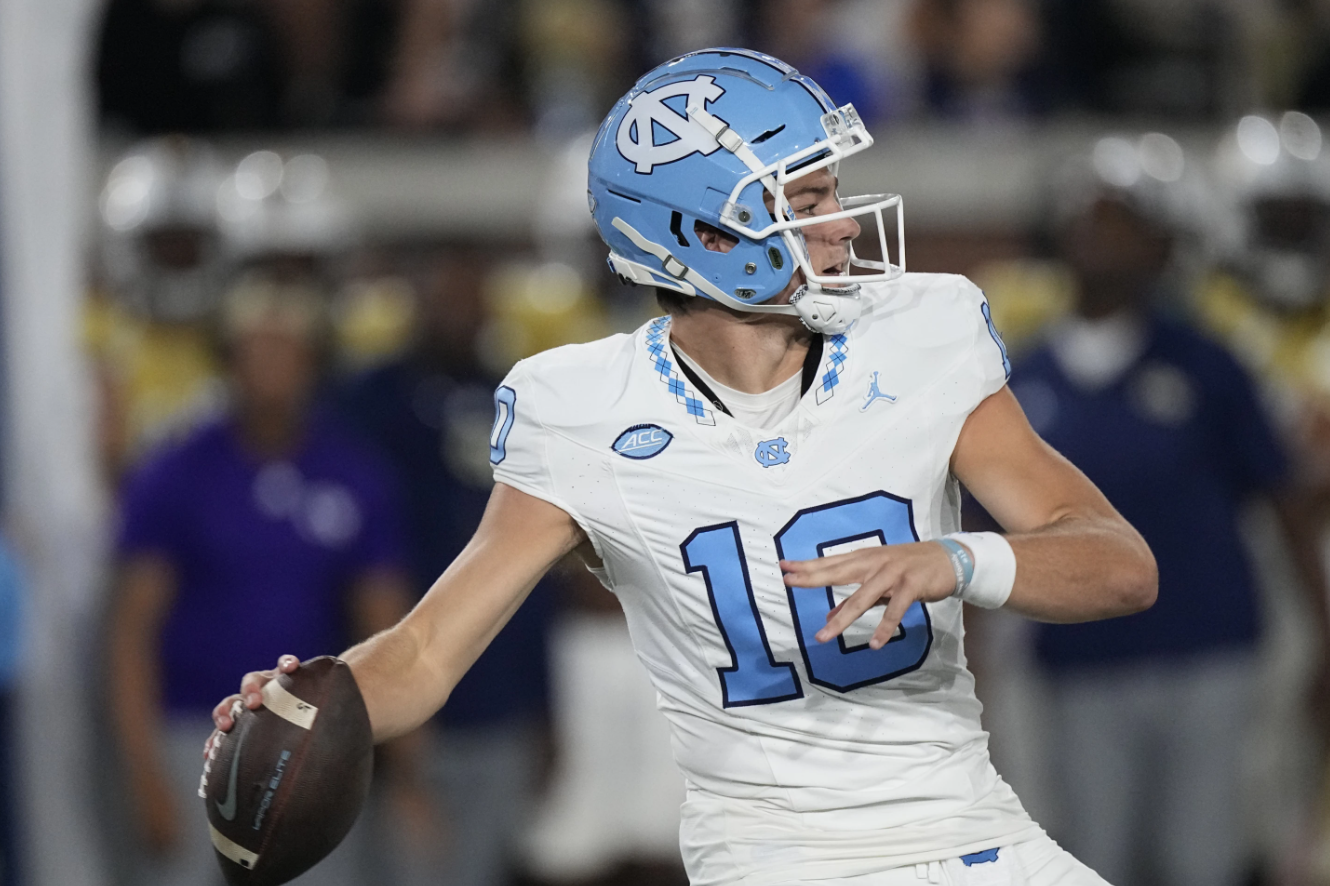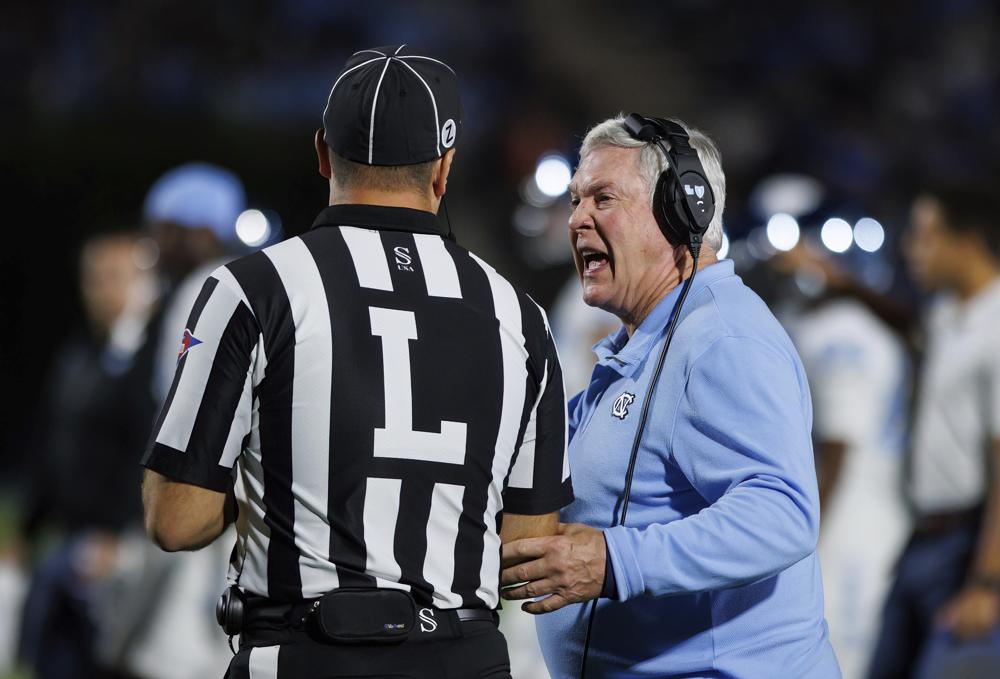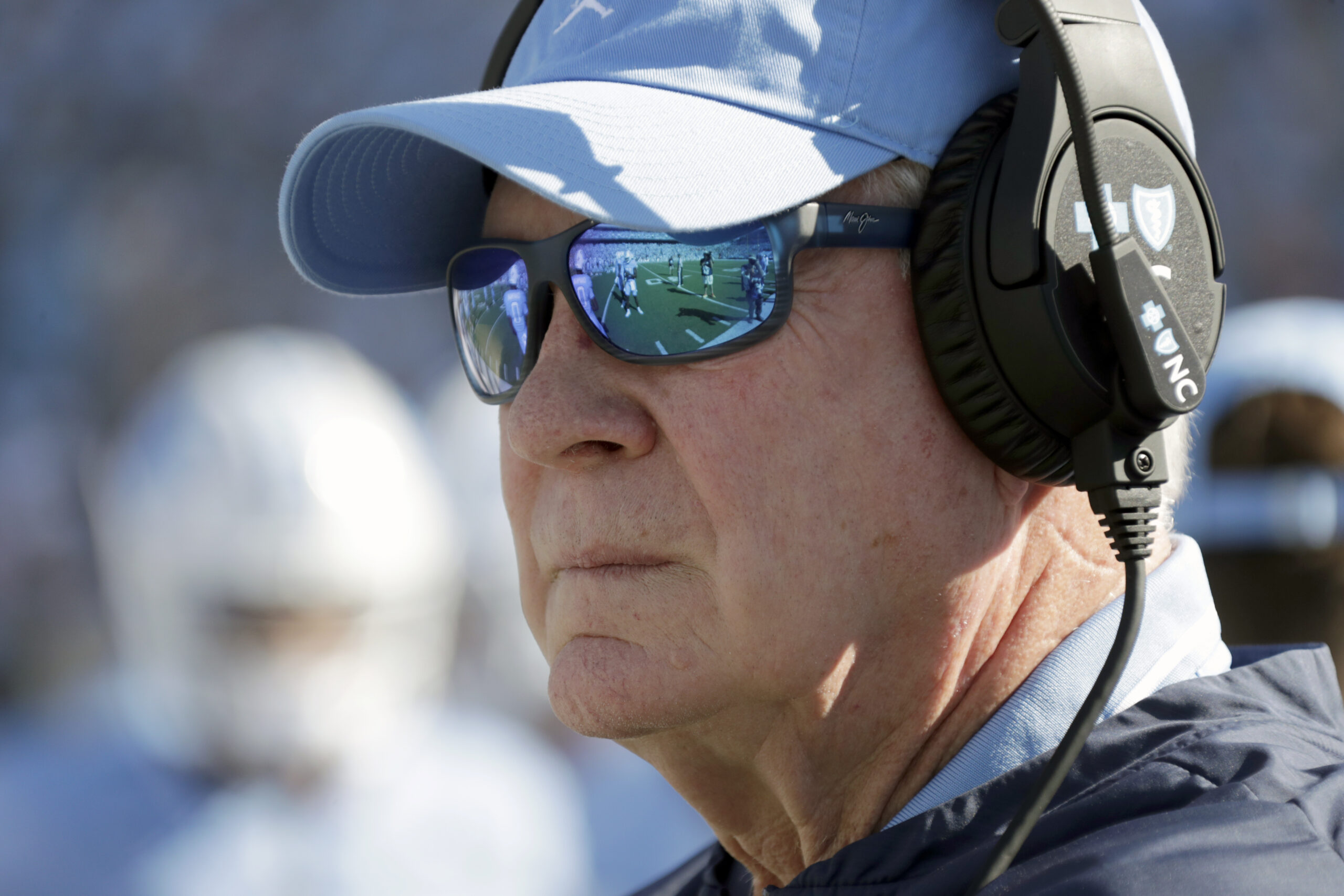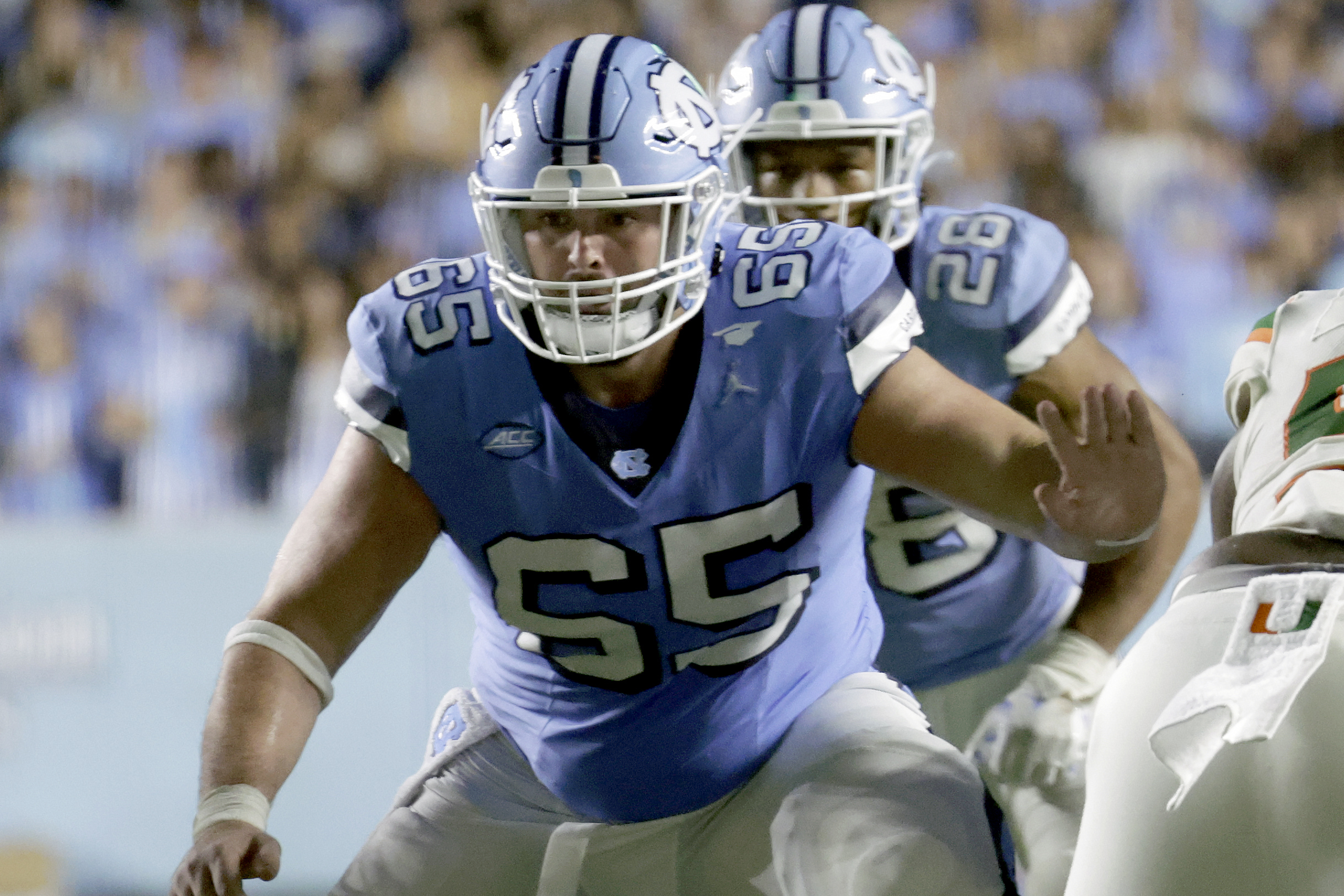
Art Chansky’s Sports Notebook is presented by The Casual Pint. YOUR place for delicious pub food paired with local beer. Choose among 35 rotating taps and 200+ beers in the cooler.
Playing offensive line is a thankless job, even when things go well.
Coaches can dissect and chart the game tape, but for fans watching in person and even on TV there should be stats for great blocking that results in positive rushing yards. Take last week’s game against Miami.
The Tar Heels rushed for 235 yards, 197 of them by Omarion Hampton. He could not have possibly done that against a defense allowing less than 100 yards a game without the offensive line paving the way.
Whether in the middle of a scrum that pushes the pile forward or opening clean holes for the running backs, the offensive interior line rarely gets the credit it deserves. We know when linemen commit penalties because their names are announced on the field and replayed on TV.
For example, grad student center Corey Gaynor seems to be the heart and soul of UNC’s O-line, but the only time you hear his name mentioned is when he is flagged for holding or a block in the back. If Gaynor is good for all the other snaps, there should be a stat line to recognize that.
Defensive stats include solo tackles and assists, sacks and tackles for losses, interceptions, passes broken up and blocked and hits on the quarterback. Can’t there be individual stats for clean blocks, double teams and protecting the passer that Mack Brown can recite after the game?
Brown praised Hampton and Drake Maye for getting most of the 508 yards of total offense against the No. 5 defense in the country. He said there were some busts that resulted in yards lost. And while he did say the blockers were “playing banged up all the time and this is the toughest offensive line we’ve had,” there are no numbers to bear that out.
The stats and play-by-play show us that Gaynor was caught for holding twice and likely leads the linemen in that category, but where can we tell in black and white how Gaynor and his mates dominated the Hurricanes, who came in with the top rushing defense in college football.
Brown showers players with praise and supports it with statistics and defenders whose work also shows up on the post-game stat sheet with the categories listed above. But there is no way to measure how good the offensive line played during and after the game, until the coaches break down tape.
Why doesn’t Carolina invent a way to do that? Dean Smith’s assistant coaches kept stats for categories not on the official stat sheet, such as assists and blocked shots before they finally were officially tallied.
Let’s figure out how to validate the grunt guys who open up the offense.
Featured image via Associated Press/Chris Seward
Chapelboro.com does not charge subscription fees, and you can directly support our efforts in local journalism here. Want more of what you see on Chapelboro? Let us bring free local news and community information to you by signing up for our biweekly newsletter.





